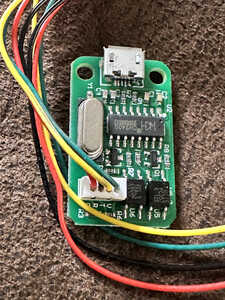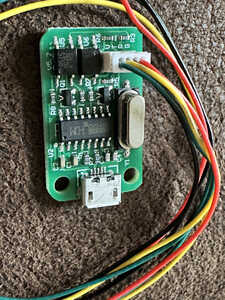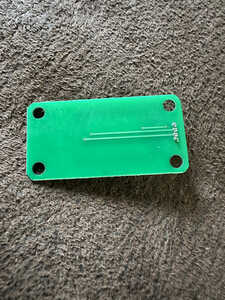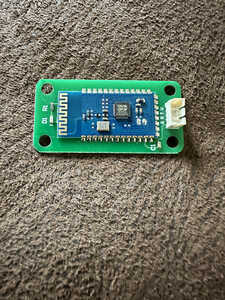I have 2 small boards that I have no clue what they are for. Here is the first. The big chip is a CH340G USB to Serial converter. The can is likely an oscillator maybe 12 mHz. The 2 smaller chips are PC357 photo couplers. There is a female Micro USB on one end and a 4 connector JST on the other. My guess is it's some sort of adaptor like an FTDI. It was in a drawer with another board with just a JST connector. After finding 2 magnifiiers, it appears to be a HEKEN BK3432 Bluetooth 5 board (there is an antenna showing)
Any thoughts?
First computer 1959. Retired from my own computer company 2004.
Hardware - Expert in 1401, and 360, fairly knowledge in PC plus numerous MPU's and MCU's
Major Languages - Machine language, 360 Macro Assembler, Intel Assembler, PL/I and PL1, Pascal, Basic, C plus numerous job control and scripting languages.
My personal scorecard is now 1 PC hardware fix (circa 1982), 1 open source fix (at age 82), and 2 zero day bugs in a major OS.
Hi Ron @zander,
A mystery indeed .. !
I agree with what you have identified .... the trouble is, this was part of something 'bigger' ... but I don't what!
The board with the CH340 appears to be a standard USB to serial, converter, probably used for software development in an environment like Arduino .. with one exceptional feature ...
The only slight unusual feature, is instead of directly connecting the serial link at 3.3V or 5V logic levels, it has two optocouplers (as you note). Each optocoupler would 'often' require two wire/pins, giving a total of 4, to connect to 'something else', although, that could be reduced to three, by sharing the 'common' return wire connection, laving a total of three. From the photo, it looks like a simple two pairs, one for each opto arrangement, but a meter could confirm that in a couple of minutes.
The important point is that optocouplers are normally used for electrical isolation, so no electrical power can travel from the CH340 board, through opto-isolators, to whatever is at the other end of the 4 wire cable....
To make the optocouplers function, the remote 'BK' board must supply a small current ... say 5-10mA, via resistor to the optocoupler that transmits data from the CH340 to the other end,
And supply current, again at about 5-10mA, modulated by the data from the remote 'BK' board, back to the CH340 board.
The mystery is the remote 'BK' board you show has a Bluetooth chip, etc. as you spotted, probably a bit like a low spec, very distant relative of the ESP32, but no obvious power source connection!!!!
My first guess, is that the remote board screws onto something else, and that 'something else' which is powered externally, as well as springy contacts that make contact with the remote 'BK' board you are showing.
And the presence of the optocouplers suggests that the remote board might normally connected to the mains (or equivalent high voltage supply), so that in 'normal' operation, the remote board would be 'hidden' in something and powered by the mains, though it could be any external power source.
My first thought is towards 'smart' light bulbs/lighting control, but that is 100% speculation. It could be virtually anything that senses something or controls something (or both), that has its own power input.
Does any of this ring any bells?
Best wishes and hoping you are getting sorted, as well hoping your health is holding up, Dave
@davee Thanks for the analysis Dave. Any day you mostly agree with me is a good day indeed. Sorry, but I have no idea where these parts came from. Because of the move, I lost a lot of 'context' that might have enabled me in a search. I will file it away and maybe I will make a connection later with the other half of the mystery.
First computer 1959. Retired from my own computer company 2004.
Hardware - Expert in 1401, and 360, fairly knowledge in PC plus numerous MPU's and MCU's
Major Languages - Machine language, 360 Macro Assembler, Intel Assembler, PL/I and PL1, Pascal, Basic, C plus numerous job control and scripting languages.
My personal scorecard is now 1 PC hardware fix (circa 1982), 1 open source fix (at age 82), and 2 zero day bugs in a major OS.





